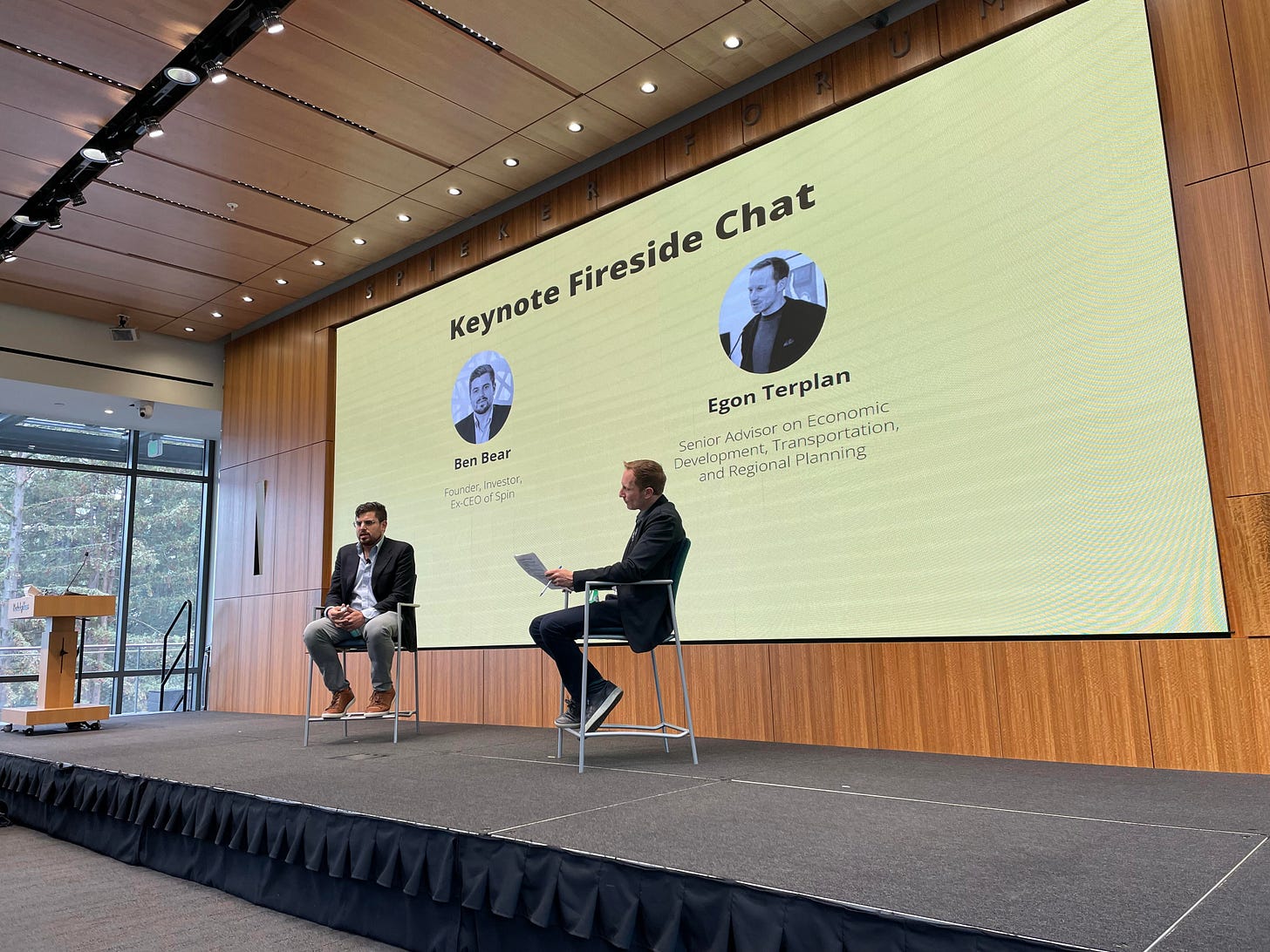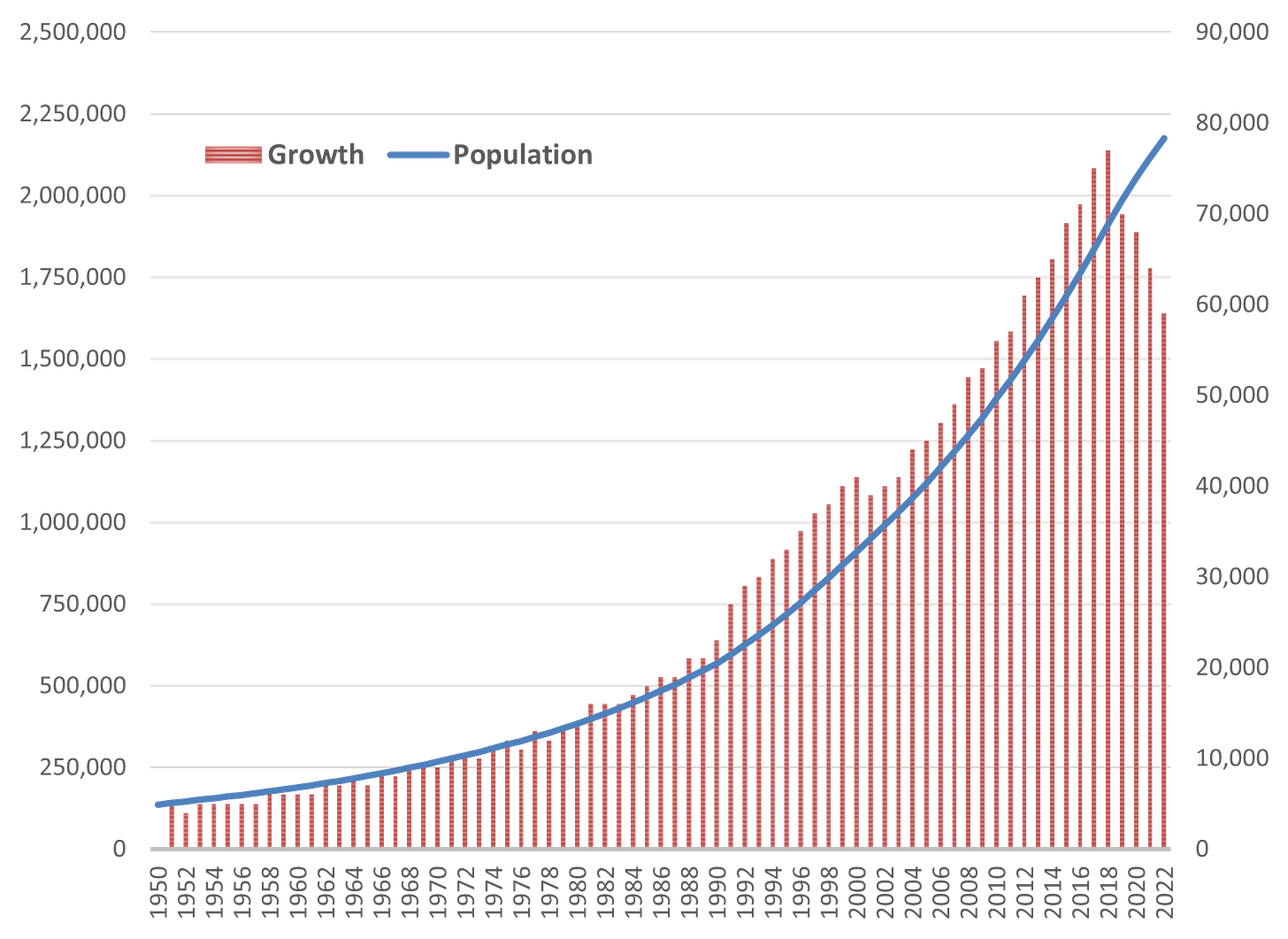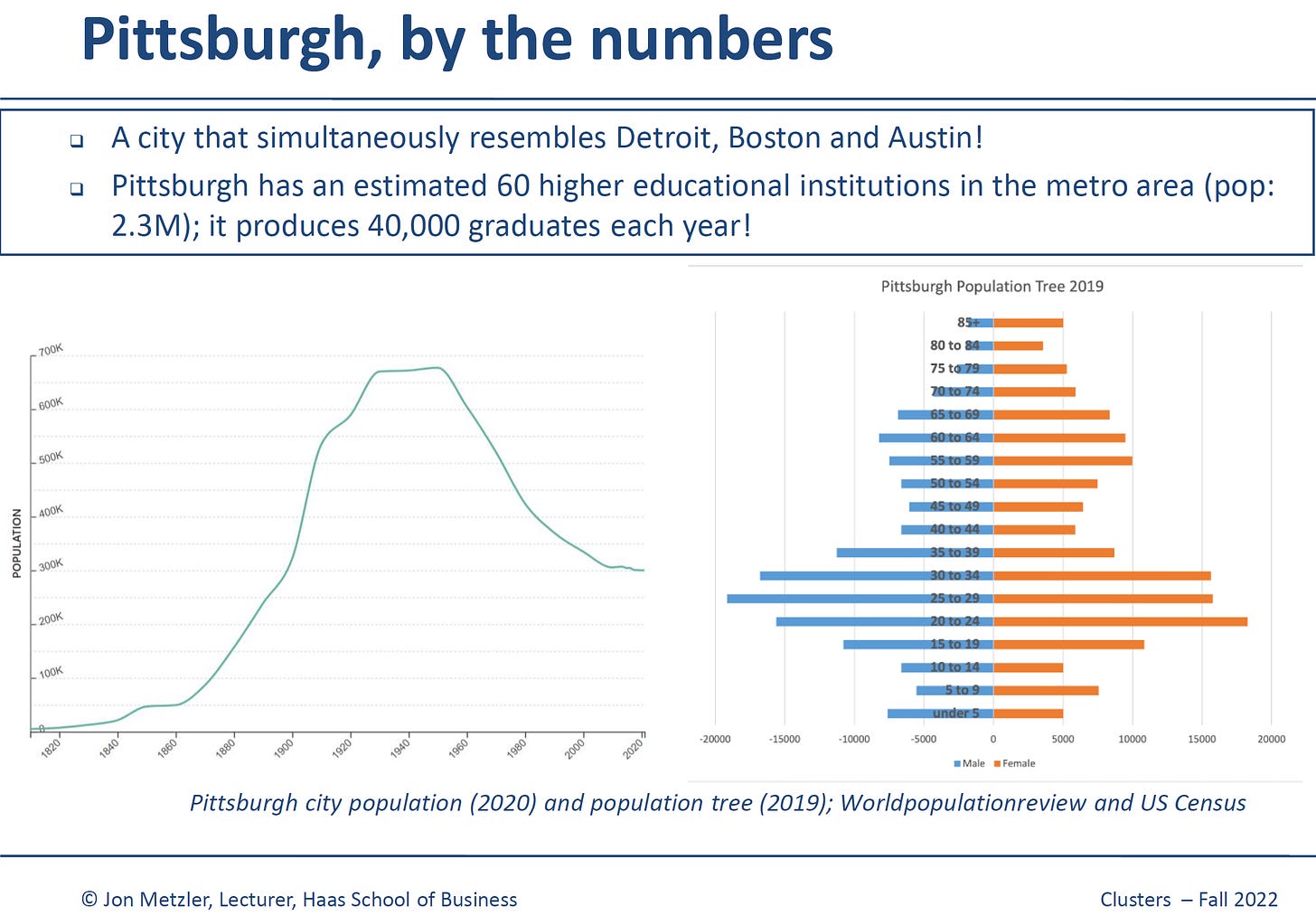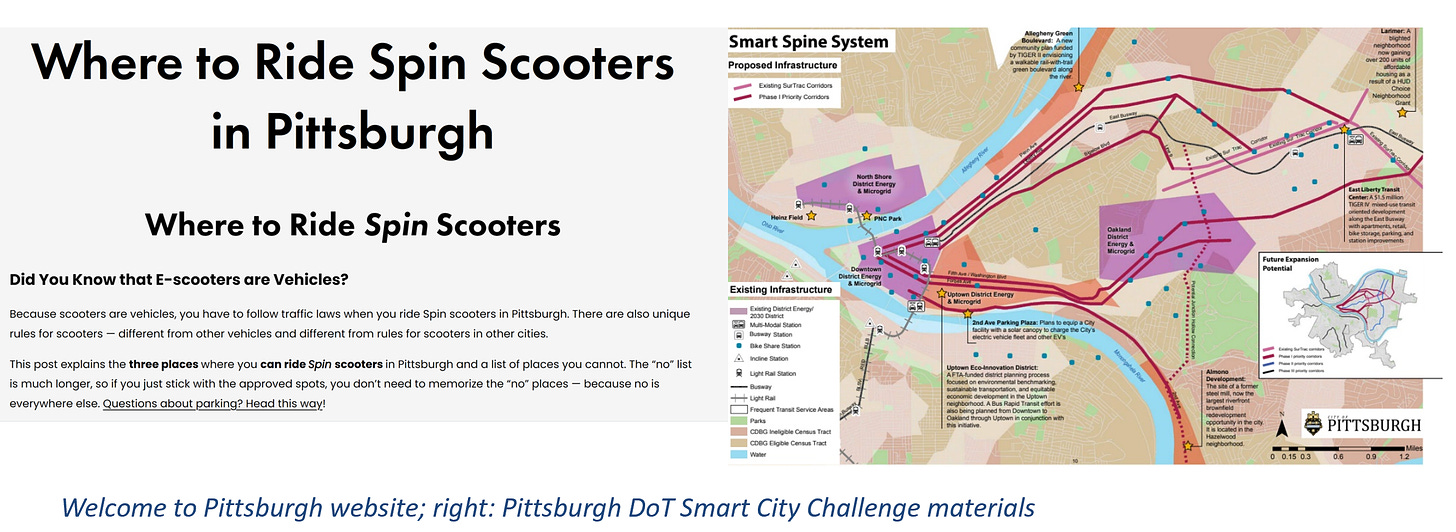Friends - Apparently you all liked the last post on measuring people flows post pandemic.
That was by far the most read in the brief history of this newsletter. All credit, of course, goes to the students whose creative metrics for measuring people movements I’d cited.
#2 most popular post? Part 1 of 2 on a visit to Detroit this summer.
On November 5 I had the pleasure of joining the Haas Mobility Summit as both eager spectator and moderator of a panel discussion on re-imagining cities.
Re-imagining cities panel, with Ratna Amin; Zack Browne; and Gene Oh
Congratulations to the organizing team on a successful event. I had a lot of fun discussing the challenges and opportunities getting people back into the city, and onto alternatives outside of the car.
The opening keynote, with Ben Bear, former CEO of micro-mobility provider Spin, was riveting, especially as someone who (1) teaches on Ford in strategy class (using the Ford case Disruption in Detroit, by Haas’ own Prof. Ernest Gundling.); and (2) teaches on Clusters, with a focus on transitions and turnarounds. Bear’s comments highlighted the role mobility networks can play in cities with different needs.
Ben Bear, former CEO, Spin, with UC-Berkeley’s Egon Terplan
Ford acquired Spin through its Ford Smart Mobility business unit in November 2018 and sold the unit in March 2022. Other transactions Ford has exited or unwound include Argo.ai (in class, this was an example of Buying the self-driving “brain” rather than Making or Partnering) and the shuttle service Chariot. Below is a capture from a September undergrad strategy class. We look at Ford in two parts, and new entrant EV makers, also in two parts, as a combined look at Make vs Buy decision making and Returns (from Environment, Industry, and Focal Company Decisions).
The sale of Spin to TIER highlights the challenges in corporate-level strategy, or finding synergy across different business units. Ford commented that the merger of rivals would help provide much needed scale to a micro-mobility network provider. That pressing need outweighed whatever synergy Ford was getting as owner of an e-scooter network. (Note that Ford now has equity in TIER.)
What also got my attention was Bear’s commentary on where Spin had found adoption. He cited Pittsburgh and Austin, which are two cities in very different places.
Austin, as mentioned in a previous post, is trying to grow by 160,000 jobs over 5 years. It is a city where the transit can’t keep up with the people. Accordingly, congestion has gotten worse, real estate prices have gone up, and it is issuing mobility bonds to pay for new transit, and also to do some more basic things, like put in sidewalks where they are needed. There, e-scooters can serve to fill gaps in transit network coverage, while keeping emissions down.
Austin metro population: up and to the right
Meanwhile, Pittsburgh has two elite anchor universities in close proximity in Oakland Square and a population structure that simultaneously looks like Austin (young) and Detroit (depopulated relative to its historic peak). It also has some 30,000 empty houses within the city, and an estimated 60,000 in Allegheny County.
For a city like this, micro-mobility fulfills a different need - relatively inexpensive connectivity tissue, in the face of a limited tax base, say, between areas with high agglomerations of talent like Oakland Square, and then areas with housing. For the cost of a market concession, a city like Pittsburgh (or Detroit) can augment transit through or to depopulated areas.
For its part, Pittsburgh has been trying to gap-fill using electric busses, through a Bus Rapid Transit project funded by a mix of federal (DoT), state, county and local funding sources. The time required getting funding shows the appeal of being able to drag-and-drop an e-mobility network relatively quickly, albeit with some obvious constraints in a cold weather city.
The dynamic of serving-cities-in-different-places was also a reminder of a truth seen with mobile/social/local networks like OpenTable or Yelp, or, later, car-sharing services: they are networks of networks, or collections of city networks that themselves are often in different stages of maturity.
**
Two days after the Haas Mobility Summit, we discussed Pittsburgh in Clusters class, so I incorporated Bear’s remarks into my materials, along with information about Pittsburgh’s Smart Spines deployment, to show how technology can provide low(er) cost solutions for cities with limited tax resources.
**
Miscellaneous:
It was a delight to host Michiko Ashizawa, Associate Professor with Yokohama City University, during our Clusters class discussion on Pittsburgh. She posted on her visit here.
I just finished the methodically reported California Burning, by the WSJ’s Katherine Blunt. Riveting, sobering and ultimately saddening. A must-read. Next up: Steve Case’s The Rise of the Rest, followed by Chris Miller’s Chip War.









